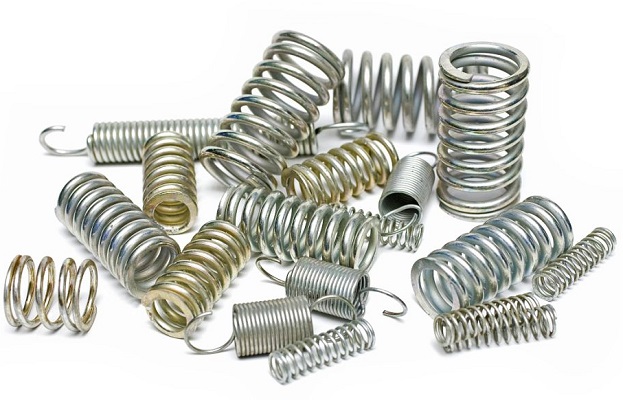Factors affecting spring fatigue strength
The below are the main factors,which influence the spring fatigue strength. When you producing and using springs, you have to pay attention on following issues.
Yield strength
There is a certain relationship between the yield strength and fatigue limit of the material. Generally speaking, the higher the yield strength of the material, the higher the fatigue strength. Therefore, in order to improve the fatigue strength of the spring, we should try to improve the yield strength of the spring material, or use the material with high ratio of yield strength to tensile strength. For the same material, fine grain structure has higher yield strength than coarse and fine grain structure.
Surface state
The maximum stress mostly occurs on the surface of the spring material, so the surface quality of the spring has a great influence on the fatigue strength. Cracks, defects and scars caused by spring materials in the process of rolling, drawing and rolling are often the causes of spring fatigue fracture.
The smaller the surface roughness of the material, the smaller the stress concentration and the higher the fatigue strength. Effect of material surface roughness on fatigue limit. With the increase of surface roughness, the fatigue limit decreases. In the case of the same roughness, the reduction degree of fatigue limit of different steel grades and different rolling methods is also different. For example, the reduction degree of cold coil spring is smaller than that of hot coil spring. Because when the steel hot coil spring and its heat treatment are heated, the surface of the spring material becomes rough and decarburizes due to oxidation, which reduces the fatigue strength of the spring.
Carry out grinding, forced pressing, shot blasting and rolling on the material surface. Can improve the fatigue strength of the spring.
Size effect
The larger the size of the material, the higher the possibility of defects caused by various cold working and hot working processes, and the greater the possibility of surface defects. These reasons will lead to the decline of fatigue performance. Therefore, the influence of size effect should be considered when calculating the fatigue strength of spring.
Metallurgical defect
Metallurgical defects refer to non-metallic inclusions, bubbles, element segregation, etc. The inclusion on the surface is the source of stress concentration, which will lead to premature fatigue cracks between the inclusion and the matrix interface. The quality of steel can be greatly improved by adopting measures such as vacuum smelting and vacuum pouring.
Corrosive medium
When the spring works in corrosive medium, it becomes a fatigue source due to pitting corrosion on the surface or corrosion of surface grain boundaries, which will gradually expand under the action of variable stress and lead to fracture. For example, the fatigue limit of spring steel working in fresh water is only 10% ~ 25% of that in air. The effect of corrosion on spring fatigue strength is related not only to the number of times the spring is subjected to variable load, but also to the working life. Therefore, the working life should be taken into account when designing and calculating the spring affected by corrosion.
For springs working under corrosive conditions, in order to ensure their fatigue strength, materials with high corrosion resistance, such as stainless steel and non-ferrous metals, or protective layers on the surface, such as plating, oxidation, plastic spraying, painting, etc. The practice shows that cadmium plating can greatly improve the fatigue limit of spring.
Temperature
The fatigue strength of carbon steel decreases from room temperature to 120 ℃, increases from 120 ℃ to 350 ℃, and decreases after the temperature is higher than 350 ℃. There is no fatigue limit at high temperature. Heat resistant steel shall be considered for springs working under high temperature conditions. Under the condition of lower than room temperature, the fatigue limit of steel increases.







